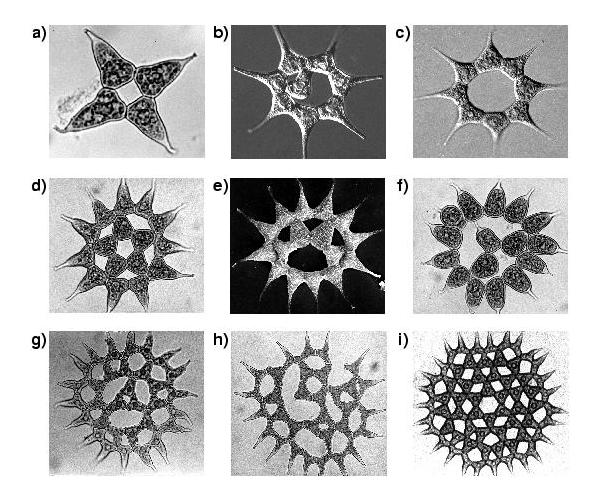
Green algae of the genus Pediastrum aggregate within a vesicle that
is released by the mother cell. Starting from a random, flagella-driven,
motion 4, 8, 16, 32, 64 or 128 cells arrange into a (usually) symmetric
planar colony. (Note: if initial conditions are unfavourable, the aggregation
time is not sufficient to yield a symmetrical arrangement). After aggregation,
long bristles grow out of the outer cells, so that the colony is mainly
horizontally oriented in the water and optimal exposure to light is achieved;
this orientation is robust to water currents.
We simulated the aggregation process in a model that includes attractive
and repulsive forces, flagellar propulsion, and cell-shape reformation.

Observed cell aggregates of Pediastrum simplex:

Simulated cell aggregates of Pediastrum simplex:

Publications
M. Grewe and M. Markus, "Aggregation of the green alga Pediastrum: experiments and simulations", J. biol. Systems 8, 373-398 (2000)
M. Markus, K.Koetter, M. Schmick, M. Grewe and E. Goles, "Selforganization of interacting, round particles into symmetric or asymmetric aggregates", in: 'Symmetry 2000' (I. Hargittai & T. Laurent, eds.), Portland Press, London, 377-398 (2002)